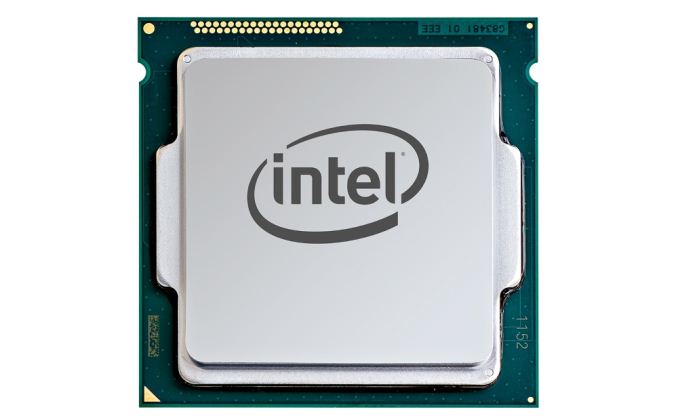Intel's First 4.0 GHz Pentium: Pentium Gold G5620 Listed At Retail
by Anton Shilov on February 19, 2019 7:00 PM EST- Posted in
- CPUs
- Intel
- Celeron
- Pentium Gold
- Core 9th Gen
- Coffee Lake Refresh

A number of European retailers have started listing new Celeron and the Pentium Gold-branded processors, which indicates that the world’s largest CPU supplier is about to formally announce the products. Topping the list of new processors is the Pentium G5620, which happens to be Intel's first Pentium-branded CPU clocked at 4 GHz.
The list of budget-focused dual-core processors includes seven SKUs: the Pentium Gold G5620, the Pentium Gold G5420, the Pentium Gold G5420T, the Pentium Gold G5600T, the Celeron G4950, the Celeron G4930, and the Celeron G4930T. The key selling points of the new processors are their higher clockspeeds when compared to predecessors.
At this point we don't know what architecture Intel is using – if it's Kaby Lake, Coffee Lake, or Coffee Lake Refresh – however the distinction between the three is largely academic, since these are locked processors with few active cores. Coffee Lake Refresh would be ideal, since it includes Meltdown and Spectre hardware mitigations, but as we've already seen with the high-end chips, the hardware fixes aren't any faster than the software fixes; they're just more convenient.
| Intel Forthcoming Pentium Gold & Celeron Processors | ||||||||
| Cores/ Threads |
Frequency | L3 Cache | iGPU | TDP | PN | |||
| Pentium Gold G5620 | 2/4 | 4 GHz | 4 MB? | UHD 630 (?) |
54 W (?) |
BX80684G5620 | ||
| Pentium Gold G5420 | 3.8 GHz | BX80684G5420 | ||||||
| Pentium Gold G5600T | 3.3 GHz | 25 W (?) |
? | |||||
| Pentium Gold G5420T | 3.2 GHz | UHD 610 (?) |
? | |||||
| Celeron G4950 | 2/2 | 3.3 GHz | 2 MB? | 54 W (?) |
BX80684G4950 | |||
| Celeron G4930 | 3.2 GHz | BX80684G4930 | ||||||
| Celeron G4930T | 3 GHz | 25 W (?) |
? | |||||
According to Germany-based ISO Datentechnik and Finland-based Futureport online stores, the new CPUs from Intel will be available starting from early March. But since that information does not come directly from Intel, it may not be completely accurate.
Intel originally planned to release its Pentium 4 processors based on the NetBurst microarchitecture and clocked at 4 GHz sometime in the middle of the previous decade. At some point, Intel stopped development of its Tejas generation of NetBurst processors cancelling all the products in the lineup, then the company cancelled release of Pentium 4 4.0 GHz CPUs featuring the Prescott, and the Prescott 2M designs due in 2005 – 2006. Later on the company released numerous Core-branded processors clocked at 4.0 GHz and higher, but frequencies of Pentiums topped at 3.8 GHz.
Related Reading:
- Playing Chicken: Kentucky Fried Intel Core i9-9900KFC Processor Listed
- Intel’s Core i9-9900KF Listed in the USA: $582
- Intel Details New 9th Gen CPUs for Notebooks: i9-9980HK to i5-9300H
- Intel’s New 9th Gen Desktop CPUs: i3-9350KF, i5-9400F, i5-9400, i5-9600KF, i7-9700KF, i9-9900KF
Source: Retailers, momomo_us/Twitter










21 Comments
View All Comments
KaarlisK - Wednesday, February 20, 2019 - link
Actually, one would expect the G5420 to also have UHD610. It would fit with the naming of the existing chips.KaarlisK - Wednesday, February 20, 2019 - link
And also, the cache sizes would be smaller than for the existing chips according to this table. That seems very unlikelySmell This - Wednesday, February 20, 2019 - link
I'm thinking Chipzilla screwed the pooch structurally in transistor design, density and libraries at 10nm. They 'zigged' instead if 'zagging.'AMD 'ate the bullet' with 28nm SHP 'Excavator' dense cell libraries. As painful as it was, this transition evolved into 'GPU' transistors as opposed to 'CPU' transistors.
Intel missed the memo. Using CPU 'EUs' for graphic functions got old and busted.
Irata - Wednesday, February 20, 2019 - link
Now it just needs to be available for a day or two at a reasonable retail price so that it can be included in the next "budget CPU shootout" as the best option, regardless if it is available anywhere near that price then ;)Targon - Wednesday, February 20, 2019 - link
Intel must have missed the memo that dual core should be dead at this point. Look at those TDP numbers, and ask yourself if it makes sense for a 2 core, 2 thread chip to require even 35 watts in the desktop space, let alone 65 watts. Since Intel rates the TDP on base frequencies, and not on turbo/boost, are these 28nm chips?Death666Angel - Wednesday, February 20, 2019 - link
Huh? Stop spreading BS. These low thread parts from Intel were always running way below advertised TDP levels. I remember 2c/2t Celerons and Pentiums being 54W and consuming less than 30W when stress testing.Also these things don't have turbo.
eva02langley - Wednesday, February 20, 2019 - link
They binned this? I guess any way to make money make sense when you have volume...xprojected - Wednesday, February 20, 2019 - link
Part # 80684 suggests Coffee Lake (or refresh), like the Pentium 5400/5600. Those CPUs are 54W and have 4 MB L3, so I'd be surprise if the TDP went up while the cache went down.tipoo - Wednesday, February 20, 2019 - link
Hyperthreading on the Golds too. This is going to be great for budget builds, Digital Foundry showed that HT makes a big difference to steady frame times in dual cores.zmatt - Thursday, February 21, 2019 - link
Tom's hardware also reported on this but their headline made me double take. "Intel to take on AMD's Athlon with 4 GHz Pentium" I had a "What Year Is IT!?!?" moment.